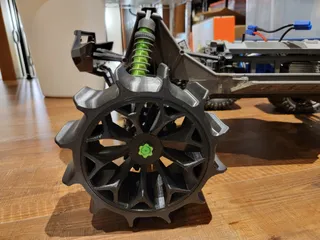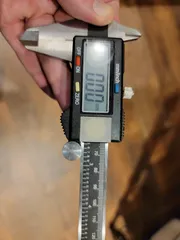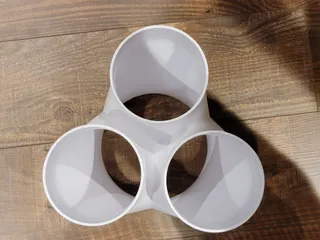Duct Grille
Description
PDFThis can be inserted in a 6 inch flexible duct tube (used for outgoing ventilation) to prevent paper towels and the like from being sucked all the way to the inline duct fan (stalling it and requiring disassembly of the ducting to extract the paper towel from the fan).
The .f3d file is included in case anyone wants to create a different size remix that avoids scaling the hex grille wall thickness.
I printed this in PETG but PLA would probably also work fine.
This is friction fit inside the tube, so depending on the tube and strength of the inline fan and how much paper towel or similar is being held by the grille, it may need to be scaled up a bit more to avoid getting sucked along the tube itself.
Scaling up or down in Z should just work, per preference. The default Z height seems long enough to avoid getting sideways in the tube.
With a grille in the duct, the first part of a vent duct can be used to dry things pretty fast.
However, if you have in mind using this as part of drying things that are wet with a flammable solvent, consider that the solvent + oxygen in the air + duct fan motor could maybe create an explosion hazard, especially if the air flow rate is low and the evaporation rate is high. I haven't had any issues drying things that are a little wet with isopropyl (AC Infinity inline variable speed duct fan), but I tend to keep the air flow rate pretty high and try to limit the amount of isopropyl being evaporated at any given time, and I don't spray isopropyl super near the duct intake.
I've also used this as part of directly venting RTV silicone curing stink (acetic acid / whatever else) when using RTV silicone in a small mold. I have no idea what long term effect this might have on an inline duct fan motor, but I'd rather destroy a motor than find out what effect stuff like that has on my lungs.
Settings for slicing this model can be a little finicky due to the thin wall thickness. The goal is to make the outer perimeter extrude as a continuous circle as much as possible (for strength) despite the inner hex pattern.
Hypothetically if you scaled this up a bit to the nominal 6 inch OD, you could use a duct clamp on it to hold it very firmly in place, or install this as a connector between two tubes (with two clamps), but friction fit inside a flex duct is the only way I've used it, and friction fit allows for quicker reconfiguration.
Tags
Model origin
The author hasn't provided the model origin yet.




